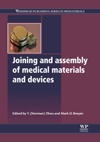To solve this problem, researchers at the University of Maryland (UMD) have developed a method for turning crab shell waste into a variety of products, including water-resistant adhesives, drilling lubricants, dietary supplements, and thickeners for cosmetics.
After cellulose, chitin is nature's most abundant compound. A large, natural polymer, chitin is found in crustaceans, insects, zooplankton and even mushrooms. The researchers found a way to extract chitin from crab shells and chemically convert it into chitosan, a compound with wide-ranging commercial possibilities.
"This project converts a potentially polluting waste into a marketable product," says Gregory Payne, Ph.D., a scientist at UMD's Biotechnology Institute who led the research effort.
In Dr. Payne's process, crab waste is first stabilized to inhibit rotting. In the next step, acids are used to remove minerals from the crab shells. Bases are then added to remove any proteins or meat tucked into the shells. In the final step, the chitin is processed into chitosan. Proteinaceous waste leftover from the operation is made into gardening mulch.
Working with a grant from the Maryland Industrial Partnerships program, the researchers started a company, Chitin Works, to commercialize the technology. Located in Cambridge, MD, Chitin Works can receive up to 20 tons of crab waste per day.






